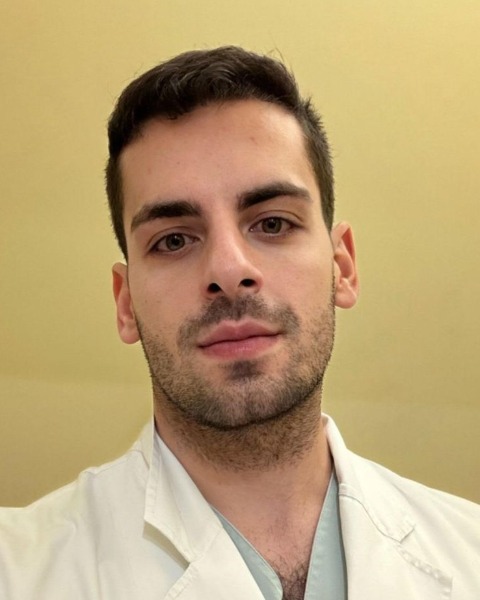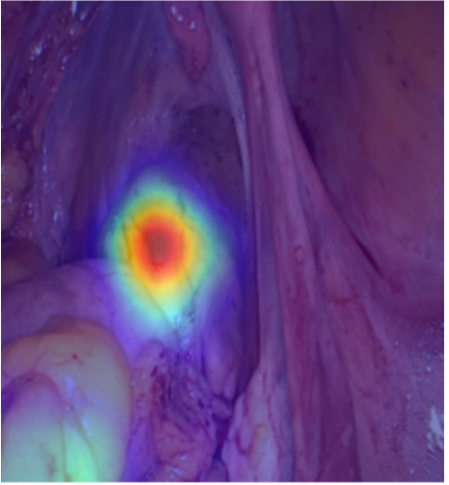Tuesday Poster Session
Category: Colon
P4565 - A Novel Deep Learning Model for Predicting Colorectal Anastomotic Leakage: A Pioneer Multicenter Transatlantic Study

Miguel Mascarenhas, MD, PhD
Centro Hospitalar Universitário São João
Porto, Porto, Portugal
Presenting Author(s)
1Centro Hospitalar Universitário São João, Porto, Porto, Portugal; 2Faculty of Engineering of the University of Porto, Porto, Porto, Portugal; 3Instituto Português de Oncologia de Lisboa, Lisboa, Lisboa, Portugal; 4Faculty of Medicine of the University of Porto, Porto, Porto, Portugal; 5Hospital Universitario Puerta de Hierro-Majadahonda, Madrid, Madrid, Spain; 6Centro Hospitalar Universitário de São João, Porto, Porto, Portugal; 7Royal Liverppol University Hospital, Liverpool, England, United Kingdom; 8Hospital das Clinicas da Faculdade de Medicina da Universidade de São Paulo de Ribeirão Preto, Ribeirão Preto, Sao Paulo, Brazil; 9Hospital das Clinicas da Faculdade de Medicina da Universidade de São Paulo de Ribeirao Preto, Ribeirão Preto, Sao Paulo, Brazil; 10Royal Liverpool University Hospital, Liverpool, Liverpool, England, United Kingdom; 11Precision Medicine Unit, Unidade Local de Saúde São João, Porto, Porto, Porto, Portugal; 12Hospital das Clínicas da Faculdade de Medicina da Universidade de Sao Paulo, São Paulo, Sao Paulo, Brazil
Introduction:
Colorectal anastomotic leak (CAL) is one of the most severe postoperative complications in colorectal surgery, impacting patient morbidity and mortality. Current risk assessment methods rely on clinical and intraoperative factors, but no real-time predictive tool exists. This study aimed to develop an artificial intelligence model based on intraoperative laparoscopic recording of the anastomosis for CAL prediction.
Methods:
A convolutional neural network (CNN) was trained with annotated frames from colorectal surgery videos across three international high-volume centers (Instituto Português de Oncologia de Lisboa, Hospital das Clínicas de Ribeirão Preto and Royal Liverpool University Hospital). The dataset included a total of 5,356 frames from 26 patients, 2,007 with CAL and 3,349 showing normal anastomosis. Four CNN architectures (EfficientNetB0, EfficientNetB7, ResNet50, and MobileNetV2) were tested. Models’ performance was evaluated using sensitivity, specificity, accuracy, and area under the receiver operating characteristic (AUROC) curve. Heatmaps were generated to identify key image regions influencing predictions.
Results:
The best-performing model achieved an accuracy of 99.6%, AUROC of 99.6%, sensitivity of 99.2%, specificity of 100.0%, PPV of 100.0%, and NPV of 98.9%. The model reliably identified CAL-positive frames and provided visual explanations through heatmaps.
Discussion:
To our knowledge, this is the first AI model developed to predict CAL using intraoperative video analysis. Its accuracy suggests the potential to redefine surgical decision-making by providing real-time risk assessment. Further refinement with a larger dataset and diverse surgical techniques could enable intraoperative interventions to prevent CAL before it occurs, marking a paradigm shift in colorectal surgery.

Figure: Heatmap generated by the deep learning model identifying the region of the image responsible for the anastomosis leakage prediction
Figure: Performance metrics on the testing dataset set. PPV – positive predictive value. NPV – negative predictive value. AUROC – area under the receiver operating characteristic curve.
Disclosures:
Miguel Mascarenhas Saraiva indicated no relevant financial relationships.
Francisco Mendes indicated no relevant financial relationships.
Eduardo Carvalho indicated no relevant financial relationships.
Filipa Fonseca indicated no relevant financial relationships.
Andre Santos indicated no relevant financial relationships.
Daniela Cavadas indicated no relevant financial relationships.
Guilherme Barbosa indicated no relevant financial relationships.
António Miguel Martins Pinto da Costa indicated no relevant financial relationships.
Miguel Martins indicated no relevant financial relationships.
Abdullah Bunaiyan indicated no relevant financial relationships.
Maísa Vasconcelos indicated no relevant financial relationships.
Marley Ribeiro Feitosa indicated no relevant financial relationships.
Ahsan Javed indicated no relevant financial relationships.
Ricardo Correia indicated no relevant financial relationships.
Matheus Ferreira de Carvalho indicated no relevant financial relationships.
Nilza Ramião indicated no relevant financial relationships.
Manuel Limbert indicated no relevant financial relationships.
Guilherme Macedo indicated no relevant financial relationships.
Miguel Mascarenhas Saraiva, MD, PhD1, Francisco Mendes, MD1, Eduardo Carvalho, 2, Filipa Fonseca, MD3, Andre Santos, 4, Daniela Cavadas, 3, Guilherme Barbosa, 2, António Miguel M P D. Martins Pinto da Costa, MD5, Miguel Martins, MD6, Abdullah Bunaiyan, MD7, Maísa Vasconcelos, 8, Marley Ribeiro Feitosa, 9, Ahsan Javed, 10, Ricardo Correia, 11, Matheus Ferreira de Carvalho, MD12, Nilza Ramião, 2, Manuel Limbert, 3, Guilherme Macedo, MD, PhD1. P4565 - A Novel Deep Learning Model for Predicting Colorectal Anastomotic Leakage: A Pioneer Multicenter Transatlantic Study, ACG 2025 Annual Scientific Meeting Abstracts. Phoenix, AZ: American College of Gastroenterology.
